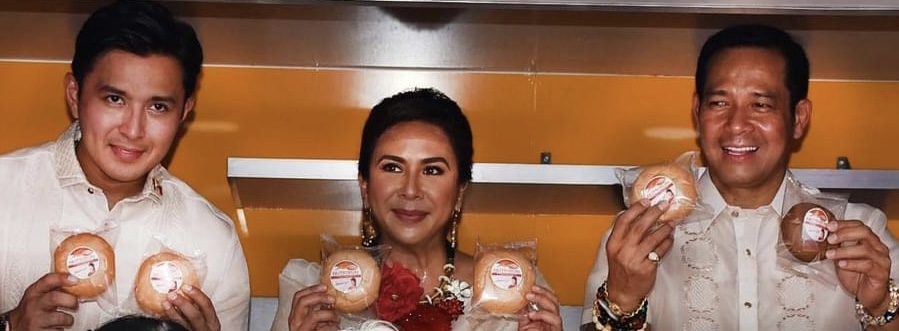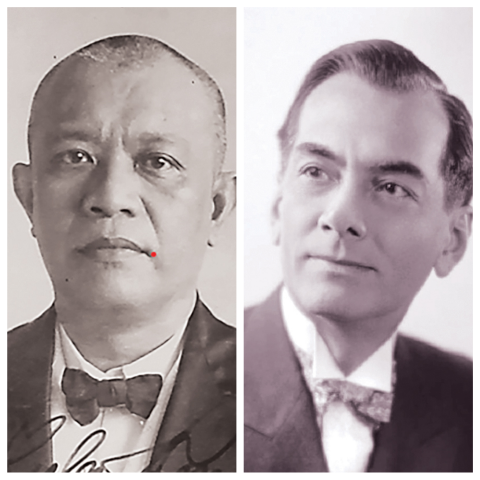If you want to fall in love, go to Bulacan
And hear our national language spoken as it was meant to be spoken
At A Glance
- Because a people without roots is like a tree that does not take sustenance from the soil. —President Ferdinand Marcos, Sr.

If you want to fall in love, go to Bulacan and be among its people.
Tagalog spoken in Bulacan will take you back to how it was spoken at the time Rizal’s Noli Me Tangere and El Filibusterismo novels were written. Everything becomes kagalang-galang (respectable), graceful, dignified, and romantic.
This was what it was like for me at the opening of the Singkaban Festival in Malolos, Bulacan last week. I couldn’t help feeling a tinge of shame for not being more adept at Tagalog, especially as I heard it, deep and formal, during my visit. I delivered the speech of my cousin Senator Imee R. Marcos (who was unable to attend after being called to join Vice President Sara Duterte in Davao) in Tagalog, where every word was multi-syllabic, composed of at least four syllables per word, in succession! The key to the successful delivery of a speech in epic Tagalog is pace.

(right) and Vice Gov. Alex Castro (left) as part of Senator Imee Marcos' program against malnutrition
among children
I remember choirmaster, clinician, and adjudicator Jonathan Velasco explaining how music, especially those compositions by Filipinos in our past that have been handed down via ear, instead of score music (on account of the original having been lost), must be performed in context.
For instance, when the time signature (indicating the duration of each beat and the number of beats per measure in the composition) is unknown, one must try to identify the period when the music was composed. If it was around the 1800s, then one can assume the rhythm would be at a slower pace, as Jonathan illustrated. “In the past, when one had to go somewhere one had to walk or ride a kalesa or a boat. So, everything was so slow,” he said.
Nowadays, when people perform, it’s often fast seemingly in fear of reaching that point when you start to bore the audience. For delivery of this speech on behalf of my cousin in Tagalog, I opted for the former, nice and slow. Self-preservation demanded it!
Just a funny sidebar, I was earnestly practicing the speech out loud in my study when my son popped his head at the door, “Mommy, why do you sound like you are going off to war?”

Suffice it to say, I did not shame my granduncle Norberto L. Romualdez, who was chairman of the committee on national language and a delegate to the Commonwealth National Assembly in 1935. He pushed for the adoption of Tagalog as our national language and succeeded, thus earning the title Father of the National Language Law. There has been some debate on the declaration of Tagalog as our national language during and since then but, as my granduncle noted in his journal and as written in his biography, Master of His Soul, Tagalog was the “lengua operante” of the nation’s capital and the “most developed among the languages and dialects existing in the Philippines in 1916.”
My granduncle believed that Tagalog had the “greatest potential for widespread diffusion because of its strategic and central location.” There were grumblings at the convention, but then Senate President Manuel L. Quezon “appealed for national unity, asking delegates to set aside all party rivalries, the spirit of regionalism, and personal prejudice for the sake of the nation.”
Indeed, the budding nation was struggling to gain a foothold in its bid for true independence. But how to rally Filipinos as a nation? Some early anthropologists have called the “tribalism” that existed before the Spaniards arrived in the Philippines as a sort of nationalism. This “tribalism” was in fact used by our colonizers to pit one “tribe” against another during insurrections. Even when the Philippines declared Independence from Spain, the 1899 Philippine Constitution could only describe the Filipino nation as “the political association of all Filipinos.”

The book Founders of Freedom: The Histories of the Three Constitutions (1971) claims nationalism began “the moment that primitive men became aware that they were alike among themselves and different from foreigners. That was how “They experience their first nationalistic impulses,” it said, adding that for the seeds of nationalism to develop, “it must be exposed to the proper stimuli.” Throughout Philippine history, we have had our fair share of stimuli, often from the abuses against the Filipinos by our colonizers and the church.
In the last century, there has been a number of attempts to ignite the flame of nationalism to reach its full-growth potential, from the idea of the National Pantheon (1911) by National Artist Guillermo Tolentino, the Tagalista movement led by the father of Philippine language and grammar Lope K. Santos in the 1930s, and to the most recent the late President Ferdinand E. Marcos (PFEM) in the mid-1960s to mid-1980s, who developed projects that defined our national history, culture, and heritage through his books entitled Tadhana.
And then there have been various cultural infrastructure projects, mounted by such institutions as the CCP, Folk Arts Theater, Makiling Arts Center, the National Artist Award, etc. to the creation of programs to promote and develop art and culture throughout the archipelago and signing into law the promotion, development, and protection of traditional people and their art in the country, among others.

But has the seed of nationalism come to full bloom?
The National Pantheon was depicted by Tolentino (1890-1976) in his drawing Filipinos Ilustres showing 13 heroes of the Philippine Revolution. A symbol of the struggles of the Filipino, it was meant to create a pantheon of heroes for a nation in its infancy.
As an accidental student of PFEM, going through his diaries, speeches, and audio recordings, he mentioned heroes a lot, especially Gen. Emilio Aguinaldo.
“The tradition of love of country, the character of nobility, and the same character of dedication and patriotism, the same character of unselfishness and self-abnegation” of our heroes, according to PFEM, is important since it can serve as inspiration and instill, nurture, and develop the character of the Filipino to keep the ideals of the nation strong.
“We trace our roots to a culture which we can be proud of,” added PFEM. “And traditions of courage of our heroes, which give to our past some degree of dignity because a people without roots is like a tree that does not take sustenance from the soil.”
When you look around, do you see that you and the people around you are alike? What does your National Pantheon look like?